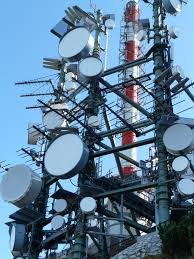Detection of Electromagnetic waves like Gamma Rays, X-Rays and visible light is usually accomplished by devices or gadgets. The human eye can only detect only a small portion of this spectrum called visible light. A radio detects a different portion of the spectrum, and an x-ray machine uses yet another portion.
Gamma Rays
Detected by photographic plates and radiation detectors like Geiger Muller Tubes.
we need a gamma spectrometer to know the energy ranges of the γ photons emitted by a radioactive source. A gamma spectrometer generally consists of a scintillation detector or a semiconductor detector to convert the γ rays into visible light or electronic signals respectively. With a multi-channel analyser, a gamma spectrum depicting the number distribution of γ photons at different energy ranges can be obtained. The γ spectrum is like the “fingerprints” of nuclides which facilitate the identification of different nuclides in a radioactive source.
By counting the rate of charge pulses or voltage pulses or measuring the scintillation of the light emitted, the number and energy of gamma ray photon striking an ionisation detector or scintillation counter can be found.

X-rays Detection
In X-ray detectors the energy transported by the radiation is converted into forms that can be recognized visually or electronically. Generally the photons are absorbed by the detector material and energy transfer takes place by ionization.
X-rays are usually detected by using a fluorescent screen or photographic film.
In hospitals, X-rays used to observe broken bones are detected by their actions on specially designed photographic emulsions. This high energy radiation may also be detected by its ability to ionise gas atoms producing a pulse of electric current in a gas placed between two electrodes.
Geiger Muller counter using the ionisation of gas atoms detects the presence of both X-rays and gamma rays.

Detection of Ultraviolet Radiation
It is usually detected by photographic films, photocells, fluorescent materials like quinine and sulphate and a paper slightly smeared with vaseline.
Quinine, a substance found in tonic water is sensitive to UV light and can absorb UV light that we can’t see and then re-emit visible blue light that we can see in a process known as fluorescence
A fluorescent material is one that absorbs the energy of UltraViolet light and then re-emits it as visible light.
The inner surface of a fluorescent tube is coated with a fluorescent material .The tube is filled with a gas that emits UV light when made to conduct by a high voltage.

Visible light
Common detectors of visible light are the eye, photographic film, charge-coupled devices (CCDs) and the photocell.
Photographic films detects light by the chemical changes it produces in light-sensitive chemicals such as silver halides. Light is also detected by the photoelectric effect in which its energy causes electrons to be emitted from metal surfaces.
By use of photoelectric effect, electrons are collected in a photomultiplier tube and the current they produce amplified to produce an electric signal.
Semiconductors are used to produce photovoltaic cells which generate a current when light falls on them and photoresistors in which incident light causes a change in electrical resistance.

Related Topics
Characteristics of a wave motion
Production of Electromagnetic waves
Applications Electromagnetic waves


Leave a Reply